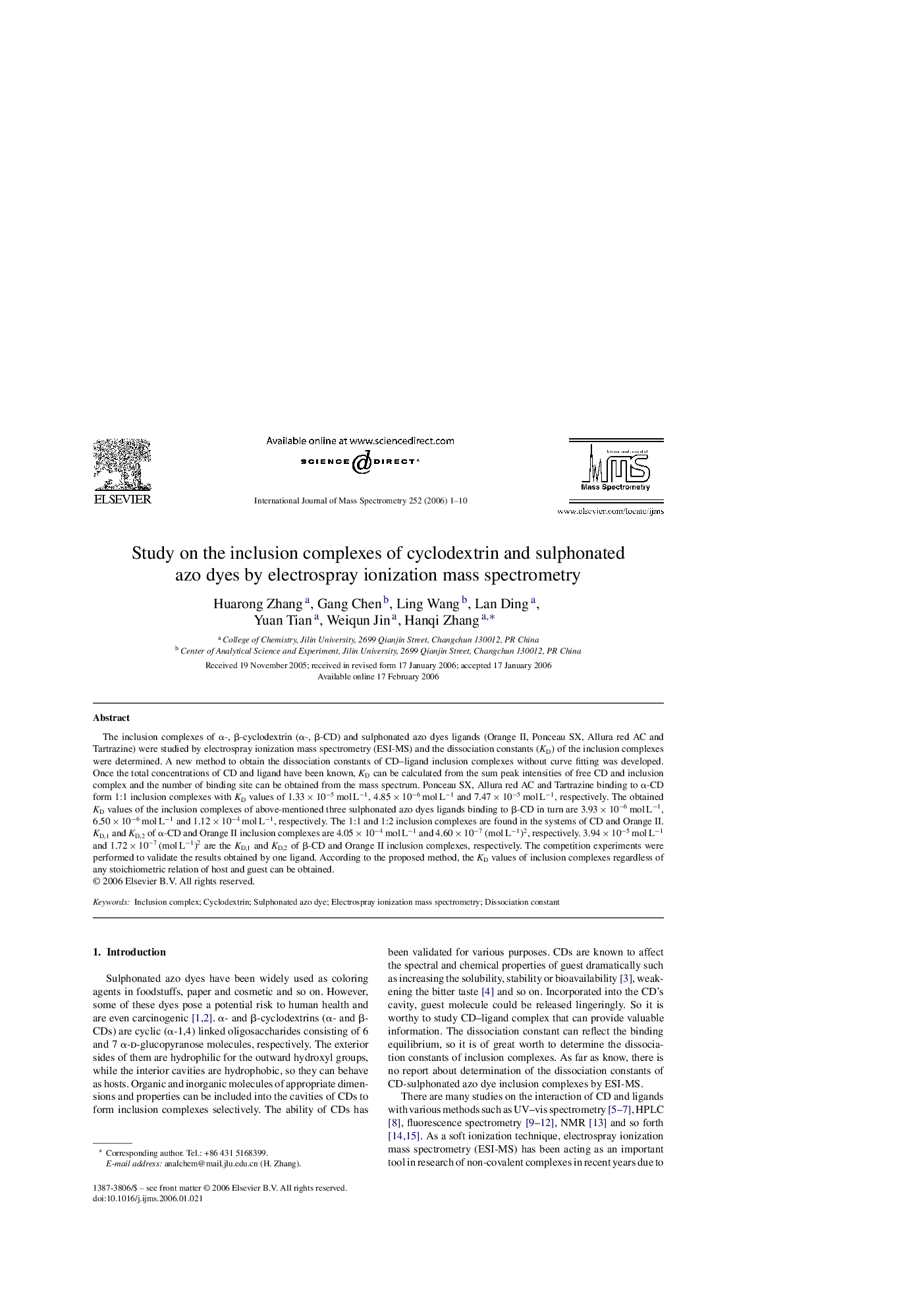| Article ID | Journal | Published Year | Pages | File Type |
|---|---|---|---|---|
| 1192677 | International Journal of Mass Spectrometry | 2006 | 10 Pages |
The inclusion complexes of α-, β-cyclodextrin (α-, β-CD) and sulphonated azo dyes ligands (Orange II, Ponceau SX, Allura red AC and Tartrazine) were studied by electrospray ionization mass spectrometry (ESI-MS) and the dissociation constants (KD) of the inclusion complexes were determined. A new method to obtain the dissociation constants of CD–ligand inclusion complexes without curve fitting was developed. Once the total concentrations of CD and ligand have been known, KD can be calculated from the sum peak intensities of free CD and inclusion complex and the number of binding site can be obtained from the mass spectrum. Ponceau SX, Allura red AC and Tartrazine binding to α-CD form 1:1 inclusion complexes with KD values of 1.33 × 10−5 mol L−1, 4.85 × 10−6 mol L−1 and 7.47 × 10−5 mol L−1, respectively. The obtained KD values of the inclusion complexes of above-mentioned three sulphonated azo dyes ligands binding to β-CD in turn are 3.93 × 10−6 mol L−1, 6.50 × 10−6 mol L−1 and 1.12 × 10−4 mol L−1, respectively. The 1:1 and 1:2 inclusion complexes are found in the systems of CD and Orange II. KD,1 and KD,2 of α-CD and Orange II inclusion complexes are 4.05 × 10−4 mol L−1 and 4.60 × 10−7 (mol L−1)2, respectively. 3.94 × 10−5 mol L−1 and 1.72 × 10−7 (mol L−1)2 are the KD,1 and KD,2 of β-CD and Orange II inclusion complexes, respectively. The competition experiments were performed to validate the results obtained by one ligand. According to the proposed method, the KD values of inclusion complexes regardless of any stoichiometric relation of host and guest can be obtained.
